Survey Finds Government-Mandated Project Labor Agreements Reduce Competition
In October 2013, ABC National conducted an electronic survey of ABC members about a variety of topics, including the impact of government-mandated project labor agreements (PLAs) on competition for contracts to build public construction projects.
Participants were asked to respond to this simple question:
“Would you be more likely or less likely to bid on a public construction project that requires your firm to sign a government-mandated project labor agreement (PLA)?”
Of the 541 respondents, 97 percent (525 respondents) indicated that they would be less likely to bid on a PLA project. Just 16 respondents (less than 3 percent) indicated they would be more likely to bid on a PLA project.
ABC National asked the same question in similar surveys conducted in 2011 and 2009 and received comparable results.
This survey adds to the overwhelming body of existing evidence that PLAs injure competition from quality merit shop contractors and serve as a barrier to new construction jobs for 86.8 percent of the U.S. construction workforce (the percentage of the U.S. construction workforce that is not unionized).
Here’s why this survey’s findings matter:
PLAs drive up construction costs for taxpayers because responsible contractors that do a quality job at the best price refuse to bid on projects when politicians require them to sign union agreements.
Analysis by numerous academic studies of public construction projects subject to government-determined prevailing wage and benefit rates indicate PLA mandates increase the cost of construction between 12 percent and 18 percent when compared to similar projects not subject to a PLA mandate.
In addition, PLA mandates are unpopular with the public.
A 2009 national poll of 802 randomly selected U.S. residents found 89 percent of those surveyed agreed “requiring a fair and open competitive bidding process for all contractors, regardless of whether or not their workers are in a union” provided better value for taxpayers than “requiring contractors to sign a union contract to work on a construction project.”
In addition, 66 percent of those surveyed were opposed to PLAs vs. 15 percent in support of PLAs.
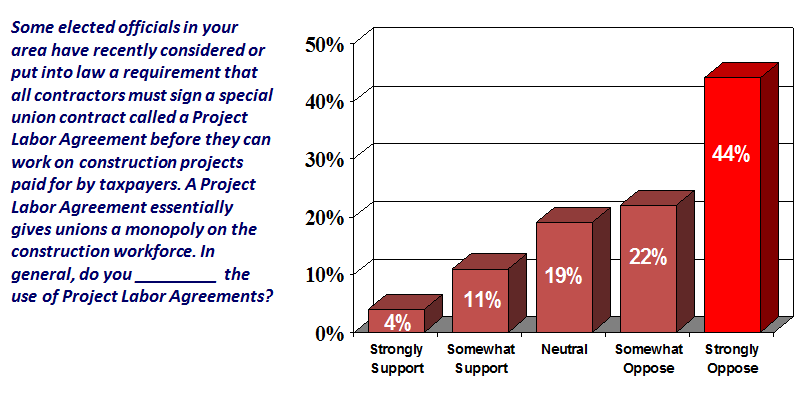 Finally, the survey found there are political consequences for politicians supportive of PLA requirements.
Finally, the survey found there are political consequences for politicians supportive of PLA requirements.
Seventy-three (73) percent of those surveyed were less likely to support pro-PLA elected officials and just 9 percent were more likely to support pro-PLA lawmakers.
The data against government-mandated PLAs is overwhelming.
So why would the Obama Administration and federal procurement officials want to implement a government policy that discourages competition from such a large segment of the construction industry via President Obama’s pro-PLA Executive Order 13502 and related regulations?
Likewise, why would state and local officials implement anti-competitive and costly PLA mandates on state and local construction projects funded by taxpayer dollars?
The answer, of course, is that PLAs are not driven by sound public policy. Instead they are the product of backroom deals cut between Big Labor lobbyists and lawmakers seeking to curry favor with Big Labor’s political machine.
An unfortunate cycle of political corruption is driving government-mandated PLAs.
A recent review of disbursements and receipts of construction trade union PACs affiliated with national unions typically signatory to PLAs illustrates the influence of union money in federal politics.
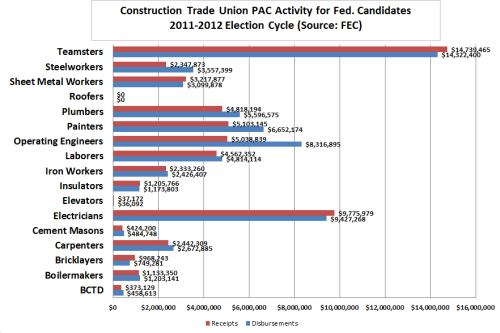
According to reports filed by union PACs with the Federal Election Committee (FEC), 17 national construction union PACs disbursed $64.991 million to federal candidates in the 2011-2012 election cycle.
They raised $58.21 million in the 2011-2012 election cycle.
Data from The Center for Responsive Politics indicates 88 percent of construction trade union PAC dollars went to Democrat politicians in the 2011-2012 election cycle.
In a keynote address at the Building and Construction Trades Department’s (BCTD) 2013 Legislative Conference, BCTD President Sean McGarvey said:
“During the 2012 election cycle, the Building Trades… including the Operating Engineers and the Carpenters…were the No. 1 overall hard dollar PAC contributor; the No. 1 hard dollar PAC contributor to the Democratic Party; and the No. 4 hard dollar PAC contributor to the Republican Party.”
These astounding figures do not include other sources of Big Labor’s money in federal politics, such as:
- federal PAC dollars raised by local unions and unionized contractors;
- “soft money” raised by national and local unions and unionized contractors for pro-labor 527 groups that run issue-specific ads shaping opinions about candidates;
- lobbying expenditures for staff and other activities to advance the pro-PLA agenda; and
- money raised via employer and employee contributions to Labor Management Cooperation Committees (LMCCs), which are largely unregulated slush funds authorized by the Labor-Management Cooperation Act of 1978, a law signed by President Jimmy Carter and implemented by the Federal Mediation and Conciliation Service. (See how LMCCs spend in California here.)
Similar analysis of the influence of construction trade union political spending in state and local politics could be easily duplicated and would likely show similar results on a smaller scale.
So here is the takeaway: Through government-mandated PLAs, construction trade unions and their pals in government engage in symbiotic mutualism at the expense of everyone else.
Citizens Want Fair and Open Competition
PLAs are nothing more than special interest handouts that deny taxpayers the accountability they deserve from government. They discourage qualified contractors and skilled craft professionals from delivering to taxpayers the best possible product at the best possible price.
As citizens, it is our right and responsibility to hold our elected officials accountable. We need to stop the influence of special interests and stop government waste by supporting politicians and laws ensuring fair and open competition in public contracting.
Taxpayers have had enough and they are taking action, which is why a total of 18 states have passed legislation or executive orders ensuring fair and open competition in state construction contracting.
It’s why legislation ensuring government-neutrality towards the use of PLAs in federal and federally assisted contracting called the Government Neutrality in Contracting Act (H.R. 436/S. 109) in the 113th Congress and identical legislation in the 112th Congress received hearings and a record number of House and Senate cosponsors.
Finally, the public and procurement officials insulated from politics know fair and open competition works, which is why ABC member contractors have won the majority of large-scale federal contracts during the Obama presidency (despite President Obama’s pro-PLA executive order) and PLAs are not used on many construction projects if you consider the amount of overall construction spending.
Facts and momentum are on the side of free enterprise. Spread the word.













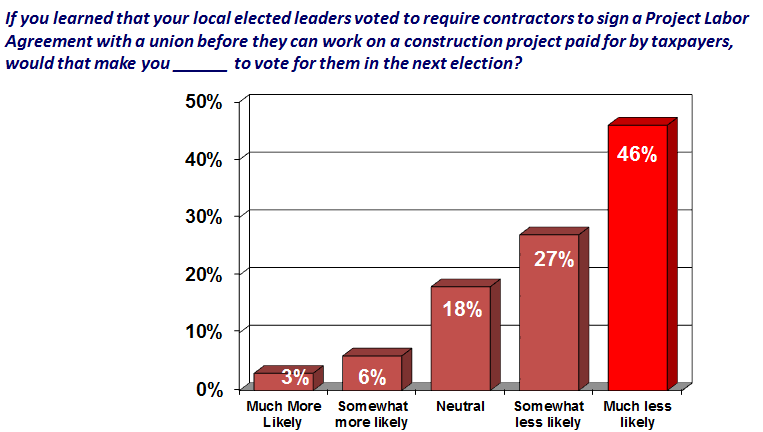
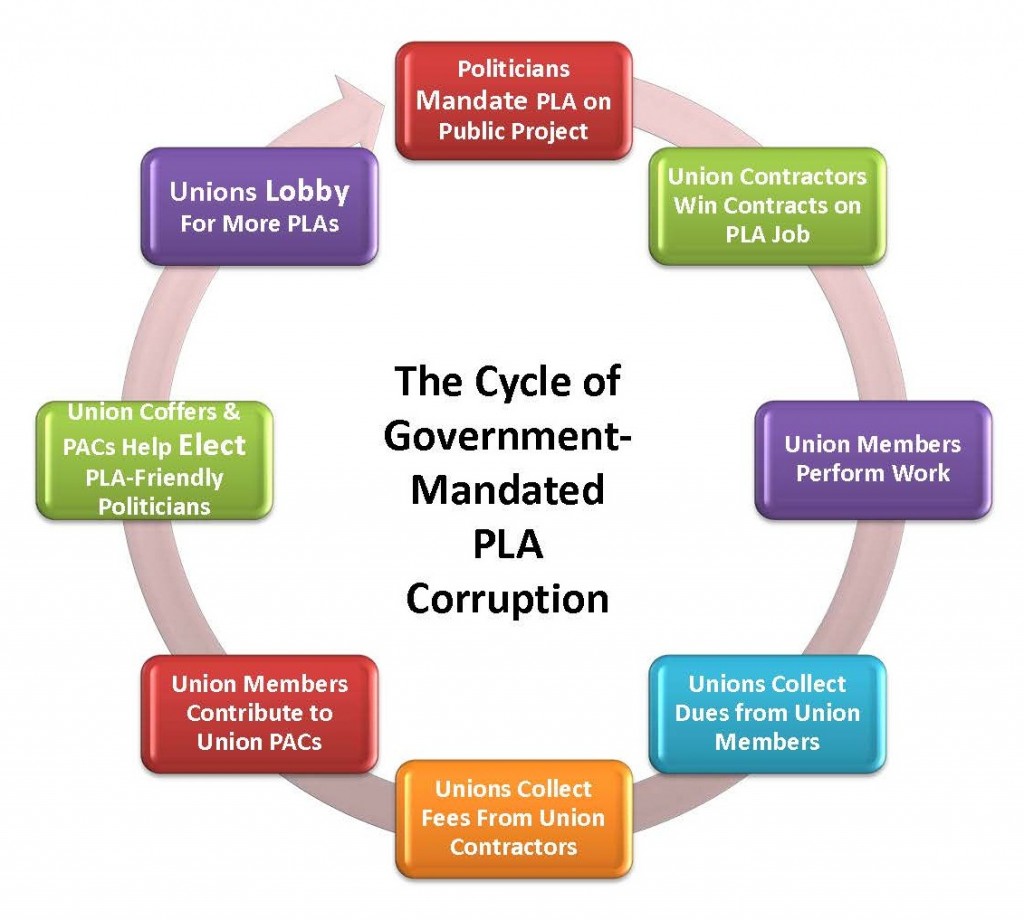
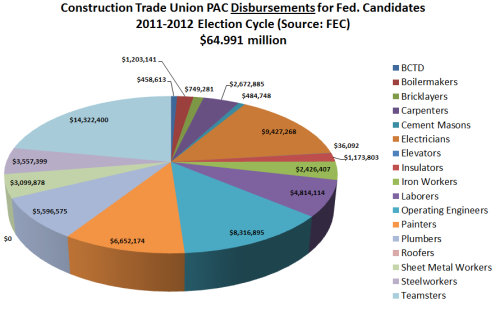
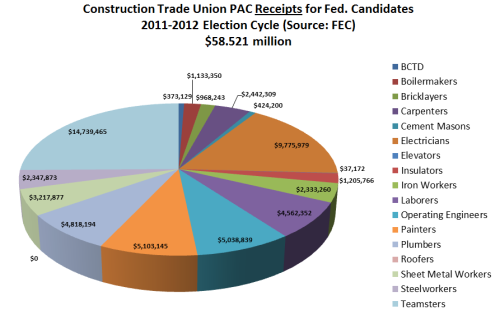
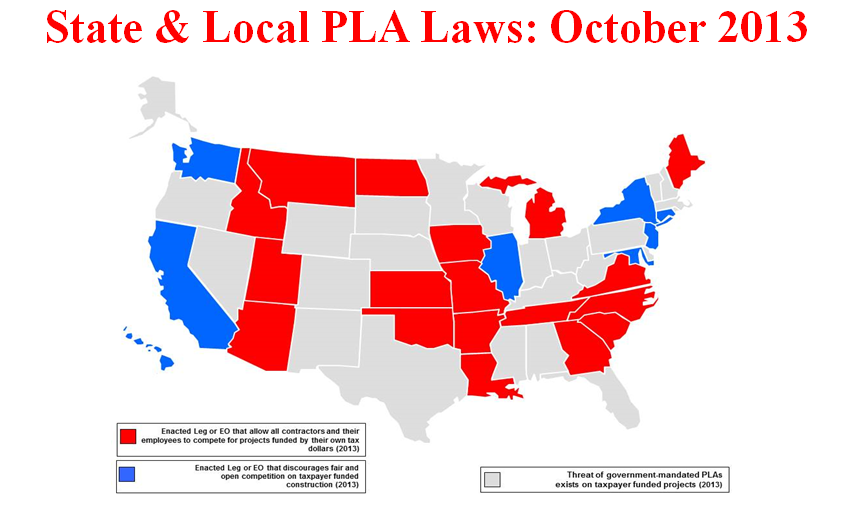
2 Responses to Survey Finds Government-Mandated Project Labor Agreements Reduce Competition
You’re preaching to the choir
What a pathetic article. PLA’s reduce competition? Now there’s some news.
Besides the rhetoric from the Unions and our blessed elected officials on their payroll, who would ever think otherwise? If it were otherwise, there would be no such thing as a PLA to discuss. The PLA is placed to mandate what would not otherwise happen of it’s own accord through the free competitive system.
This is just a symptom of the problem. Our Government is up for purchase by the highest bidder. And with $.40 of every labor dollar going into the Union coffers, guess who the highest bidder is (in this case)?